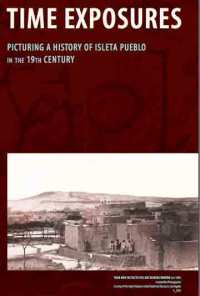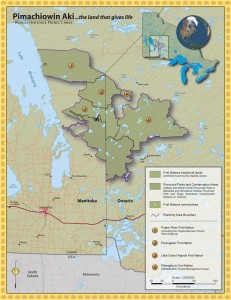This is part of the conference “Building Partnerships Between Archives and Indian Communities,” held at the American Philosophical Society (APS) in Philadelphia, May 2010.
Session 3: Digital Repatriation: A New Historical Era
Because digital technology can be reproduced so precisely and transported so inexpensively, it has created exciting new possibility for moving materials from archives back into indigenous communities.
This session focused on two groups: Pueblo Isleta developing a traveling exhibit, and Pimachiowin Aki, a proposed UNESCO World Heritage Site in Canada.

Time Exposures: Picturing a History of Isleta Pueblo in the 19th Century, is a traveling exhibit developed by Isleta Pueblo traditional leaders.
The Isleta Pueblo recently developed the photo exhibit “Time Exposures: A Photographic History of Isleta Pueblo in the 19th Century.” [PDF]
They faced the challenge of telling the history of the Isleta people from their point of view, without revealing information that would diminish the privacy or integrity of their lives, practices and beliefs, said Stephanie Zuni, from the Isleta Pueblo Cultural Affairs Office.
The exhibit of 300 photos is divided into: the cycle of the traditional year, the arrival of Americans and how it disrupted Isleta life, and examining the photographs themselves as products of white culture.
“We live as Americans in the outside world and connect with our ancestors in our village,” the exhibit guide says. “This exhibit is about the transitional period and way of surviving that defines who we are today — people living in two worlds.”
Pimachiowin Aki is a proposed UNESCO World Heritage Site, a partnership between four First Nations (Pikangikum, Poplar River, Pauingassi and Little Grand Rapids) and the governments of Manitoba and Ontario, Canada. Its boundaries would contain 40,000 sq. km of vast boreal forest, rivers, lakes and wetlands.

Map of the proposed Pimachiowin Aki UNESCO World Heritage Site, a partnership between four First Nations and the governments of Manitoba and Ontario, Canada.
“The Poplar River Ojibwe are using APS photographs to preserve 40,000 acres of land, on the east side of Lake Winnipeg,” said Sophia Rabliauskas, spokeswoman for the Pimachiowin Aki Corporation.
“Developers wanted the land for logging and hydro-development, but the community was against it,” Rabliauskas added. “The elders knew we had been there for thousands of years, but we needed to document that. Archaeologists showed that we been there for 6,000 years.
“When we stand up for our rights, we are called ‘hostile’ or ‘in the way of development,'” Rabliauskas continued. “But we are preserving our history for future generations, saving ecosystems and giving a future for our children. Ten years ago, we didn’t have our customs, and now there is dancing and singing. The land gives us a way of life, language and teachings.”



Pingback: Overview: Building Partnerships Between Archives and Indian Communities Conference at American Philosophical Society (APS) « Skyline Stories